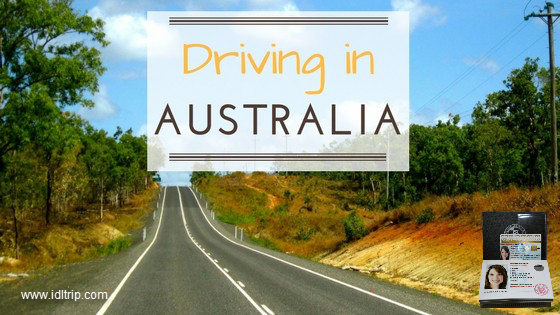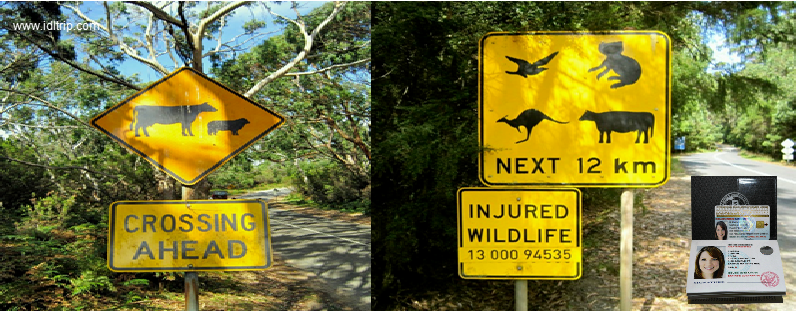Driving in Australia. Driving Requirements. Rules of the Road. What are the road conditions in Australia?
Driving in Australia

If you're planning a trip to Australia, many great destinations are only accessible by car, so you'll need to get used to some major differences if you plan to drive across the country
The differences between traveling on the right and left side of the road can really throw a driver off. To add more confusion into the mix, driving a car from a right-handed driver’s seat when you’re accustomed to driving from the left seat is even harder to acclimate to. There will be other differences such as traffic rules and how best to travel in the Outback of Australia.

Driving Requirements
You need an English driving license for driving in Australia as a tourist. If you don’t have an English driving license, you will need an International drivers license translation for driving a car in Australia. If a driver’s license does not have a photo, drivers are required to carry another form of formal photo identification with them. You can get an international drivers license from the driving license officers that have issued your original driving license or simply apply at www.idltrip.com

The cost of obtaining an International driving license varies depending on your home country and is valid for 3-5 years.
Rules of the Road
- Drive on the left always and on all Australian roads.
- Give way to the right, also at roundabouts. In some regional Australia, you have to beware of road conditions and roadworks. It can be quite confusing at crossroads, T-intersections.
- Stay on the slow lane which is the most left lane on roads and overtake on the right side. In Australian rural areas, there are passing lanes for short stretches of 1.5 km, which help you let fast drivers past.
- Speed limits: Residential and city speed limits are typically between 50 and 60 kilometers per hour (31 to 35 miles per hour) while country roads and highways have speed limits between 100 and 110 kph (62 to 68 mph).
- Alcohol: It is illegal to operate a motor vehicle in Australia if your blood-alcohol level is above .05 percent.
- U-turns: Unless there is a sign posted permitting a U-turn at an intersection, it is illegal to make one except in Victoria and the Australian Capital Territory.
- Left on red: Unless there is a sign permitting it, it is illegal to make a left turn at a red light.
- In case of an emergency: The police must be contacted in the event of an accident involving injury or death; the Australian emergency number is 000. Each state and territory has its own roadside assistance group you can contact in the event of an automobile breakdown.
Australia’s natural environment represents the major attraction for travellers but it is also concealed hazards that often are unknown to the majority of people, especially overseas travellers. Not surprisingly safety is a major concern of the local authorities, across the entire country. Fatigue has a huge impact on driving performance and is the major cause of all car accidents on Australian roads. In addition, the danger of animals crossing the roads also requires attention and high concentration while driving at night in Australia. Wildlife crossing the roads is common on Outback roads.Be vigilant for Australian wildlife, particularly at night as many of Australian native animals are nocturnal. Koalas, kangaroos, wallabies, emus and some bird life are more active early in the morning and in the evening when the temperature cools.

Watch out for wildlife on the road, such as kangaroos, emus, wombats and koalas. Livestock such as cattle may also graze on the side of an unfenced road. You should always be travelling at a safe speed so if an animal does cross in front of you, you can further reduce your speed. Do not attempt to swerve your car violently or you can roll off the road.
What are the road conditions in Australia?
Road conditions can vary from a sealed road surface to gravel and unsealed roads. If you are travelling on unsealed roads a four-wheel drive (4WD) is recommended. Be aware of hazards including holes, soft road edges and changing road surfaces. Keep to the speed limit and obey road closure signs.
Australia is a land of extreme weather conditions where some parts of the country may be affected by floods, bushfires or cyclones. You should always plan your trip in advance and check for local weather conditions in the area you are travelling to. You should not attempt to cross flooded roads as flood waters often have strong currents, which can sweep your vehicle away. You can contact the local State Emergency Service (SES) or phone 000 if you are in an emergency situation.
Australia is a top country of unique beauty and vastness. Its amazing varied landscapes make it for an ideal destination for road trips. However, it’s not easy to choose the right road trips, mostly because of the long driving distances in Australia and the many road hazards.
No matter how you choose your Australian road trip, either solo or with a travel companion, prefer short road trips with exciting things to see along your way and more options for stopovers.
